[‘Enjoying the Evening Cool at Ryōgoku Bridge’ (1847-52) by Hiroshige]
The photos below aren’t great, but the patterns are.
I took the pictures this week at the Hiroshige exhibition at the British Museum (now a victim of its own success - airport-style security to get in then ridiculously noisy and overcrowded). But the exhibition itself is much calmer, a place of quiet scrutiny and absorption.
I knew nothing about Japanese art in general, and even less about ukiyo-e woodblock prints in particular. All I knew was that Japonisme was big with European artists in the later C19 and that Japan exercised a huge influence on fashion, interior design, and flowers (see Proust on the subject of chrysanthemums) and that lots of Arts & Crafts paintings of the time had ladies holding an uchiwa - a curved, flat bamboo fan,
[design for a fan]
the sort that had woodblock prints on them. Hiroshige produced more than 800 designs for these everyday, disposable accessories and it’s amazing that any survive.
The figure in the centre of the triptych above is holding one in her mouth while she adjusts her kimono which features an animal print design (hares, I think).
It was the prints and patterns that really fascinated me. Hiroshige’s stunning skies and landscapes and views of Mt Fuji printed in colours that are still rich and bright are wonderful, as are all the delightful, often funny, tiny details of people’s lives and activities.
But if you get close up to an image and focus on the wealth of different textile patterns, and you begin to see you how phenomenally skilled the woodblock cutters were to produce such intricate and controlled lines from the original artwork. Each print involved four people: the artist, in this case Hiroshige (1797-1858), the carver, the printer, and the publisher. And because multiples could be produced from the blocks, the prints were cheap to buy at the time.
These checks are minute; the carving which was done by an anonymous, uncredited artisan is amazing, as is the printing which was also done by an unnamed, in-house man. Anyone who has had a go at even the clunkiest lino or woodcut prints will know that the tiniest of errors in the registration or lining up of the different layers of colour will send everything out of kilter. And yet these were done at speed and by hand/eye.
Like other ukiyo-e artists, Hisroshige did not stop at plain and simple checks, and instead showed off classic Japanese textile designs (still around today). Just look at this this glorious more-is-more mix of patterns; I’d love to sashay around swathed in these gorgeous drapes and folds.
There are stripes, too, and lovely bamboo baskets tied up with string,
[1854 fan design]
and exquisitely correct knots plus dots and a pattern which looks like octopus arms.
This seaside scene is so animated and expressive that it is easy to miss all the different activities while you think, hmm, the way that this pattern has been flattened makes it brilliant quilt inspiration or, hmmm, that would be a very appealing wool tweed coat fabric.
[1851]
I am also very taken with this woman who is just to go to the hot springs baths and is wearing what looks like a huge, cocooning dressing gown.
[Vuillard, 1891]
The flat planes of pattern remind me of those painted later by Vuillard and Bonnard. These still look strikingly modern and yet the influence of Hiroshige and others who were way earlier is clearly visible. I used to think the women in Bonnard and Vuillard’s work had been subsumed into their clothing with the patterns holding them in, flattening them, so they they become just cut-outs and part of the background ie less important than the decorative whole.
[‘Woman with Dog’ (1891) by Bonnard]
But now I’m wondering if it’s a question of a different perspective altogether. One which perhaps celebrates the female world of clothing and sewing and fabrics, and the “narrative potential of pattern” as this blog suggests.
[Hockney, 2021]
Although it’s not just women who like this sort of thing.
[wearing happi in Japan, 1966]
And strong Japanese patterns always make for an arresting image, especially when multiplied x4 men.
[Evelina Kroon]
The exhibition happened to coincide with my renewed appreciation of geometric patterns following the discovery of Evelina Kroon, a Swedish designer who has cornered the market - obvs with neat, sharp 90 degree angles - in rectangles and squares, which resemble quilt blocks and large-scale weaves. She uses a lot of tape and paint, and does interesting design collaborations. Her patterns have appeared on rugs, blankets, trays (eg the “Yoko” tray for Svenskt Tenn), on metro tile installations and pottery.
This is her book Mönster (“pattern”) which I found in the fabulously cool and well-stocked Konst/ig bookshop in Stockholm and even though it’s in Swedish, the patterns are all perfectly clear, just like those in Hiroshige’s prints
I came out of the exhibition feeling a rare sense of satisfaction, of happiness that people who can do so many wonderful things exist and they can paint kimonos and patterns, carve woodblocks, choose glorious colours, print indigo skies, making the world an altogether better place. I love getting my fill of art and culture and inspiration, and every so often it really is that: a feeling of repleteness, as in ‘the state or condition of being copiously supplied or having one’s appetite completely satisfied’.
Lots to contemplate, like this tiny figure enjoying the blossom.
Happy Sunday!
PS I have used my own unaltered photos and haven’t given all the details, titles, and dates - too time-consuming this week. But the catalogue is brilliant and it’s all in there or on eg the British Museum and the Met’s websites.





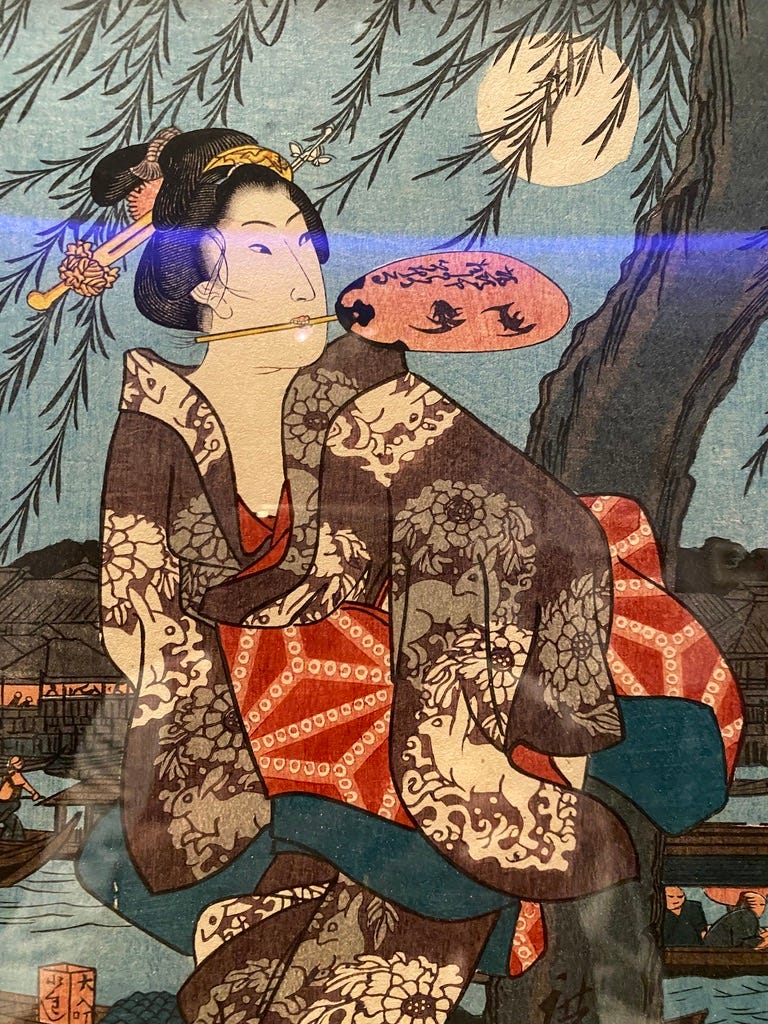


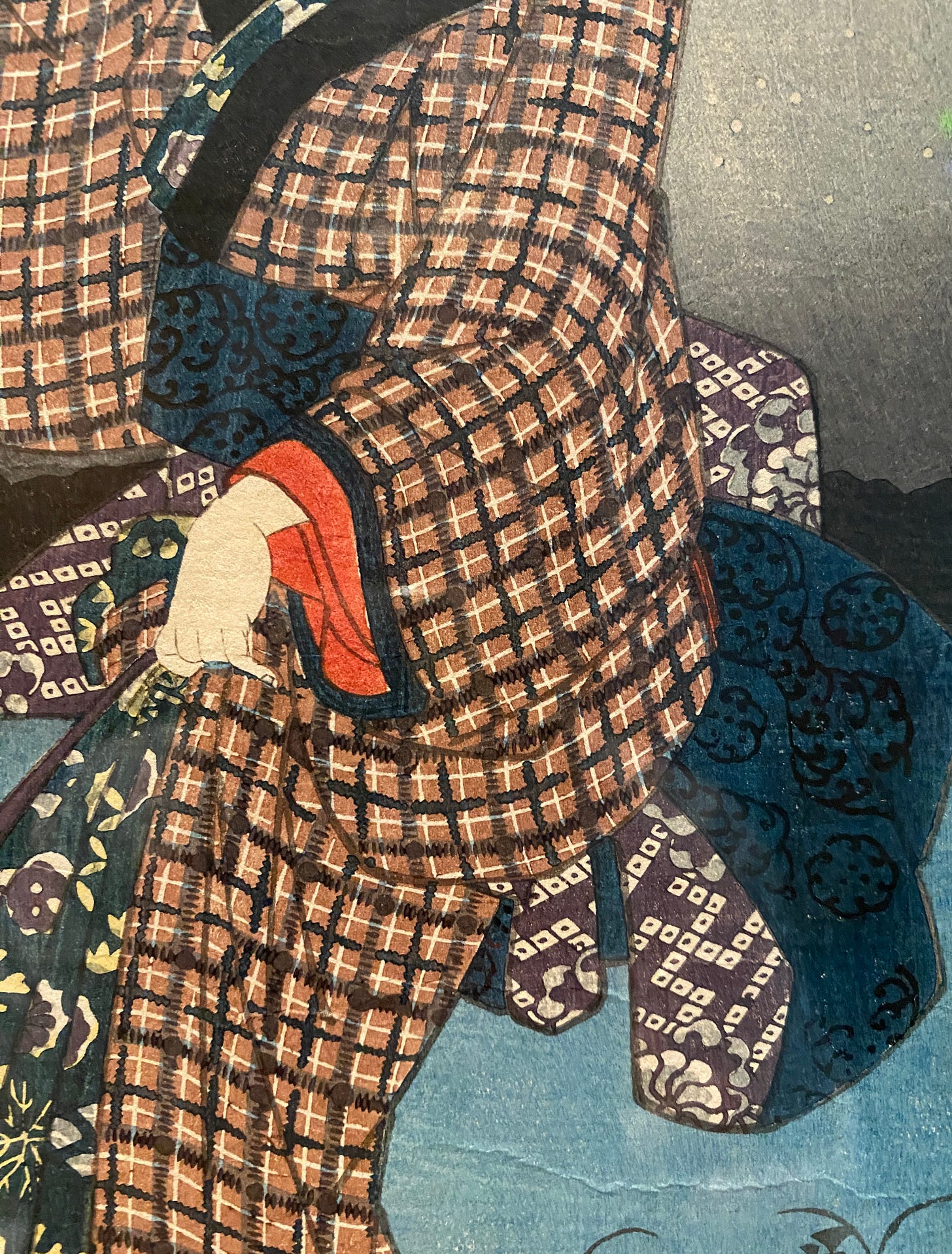
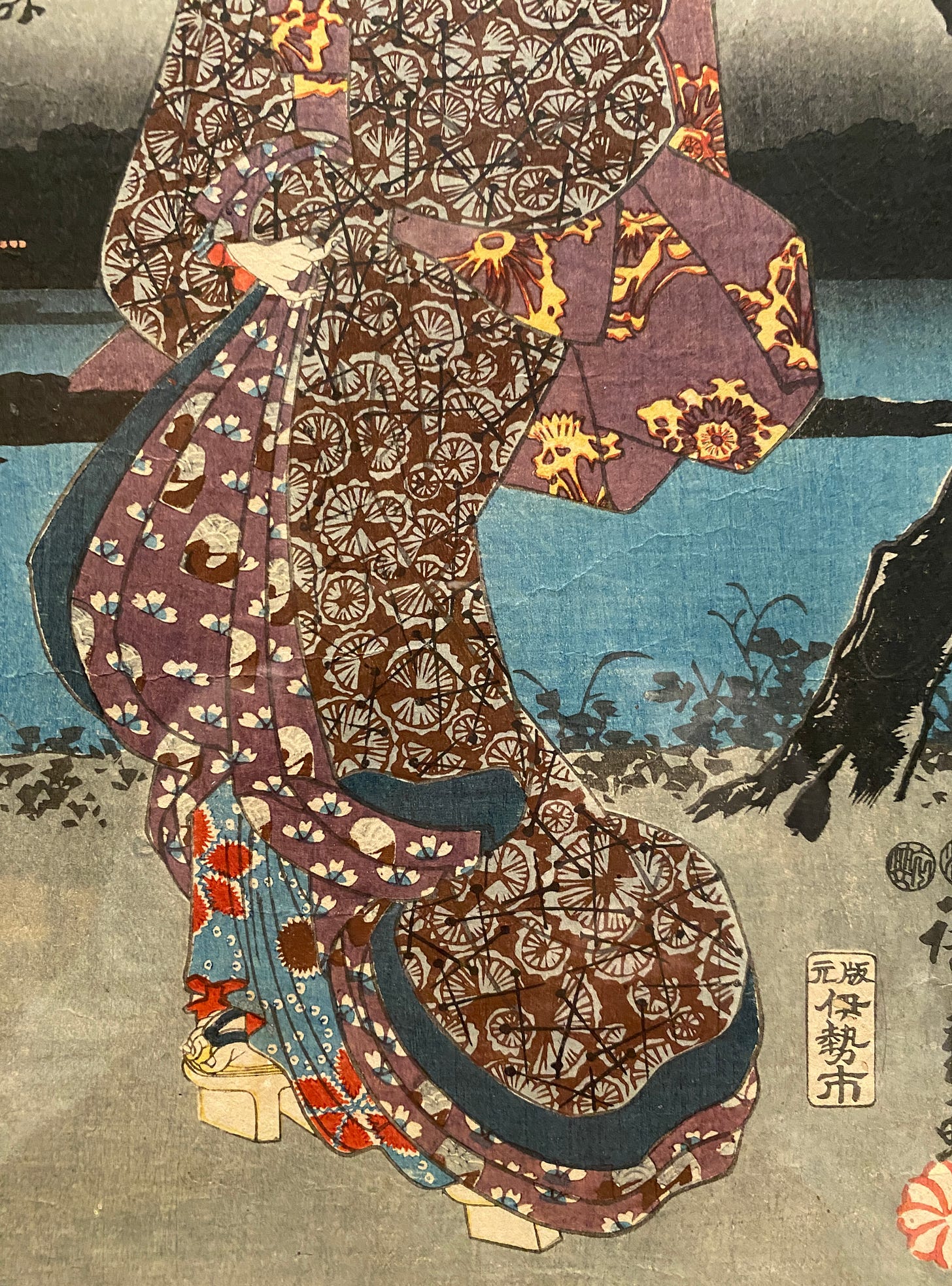
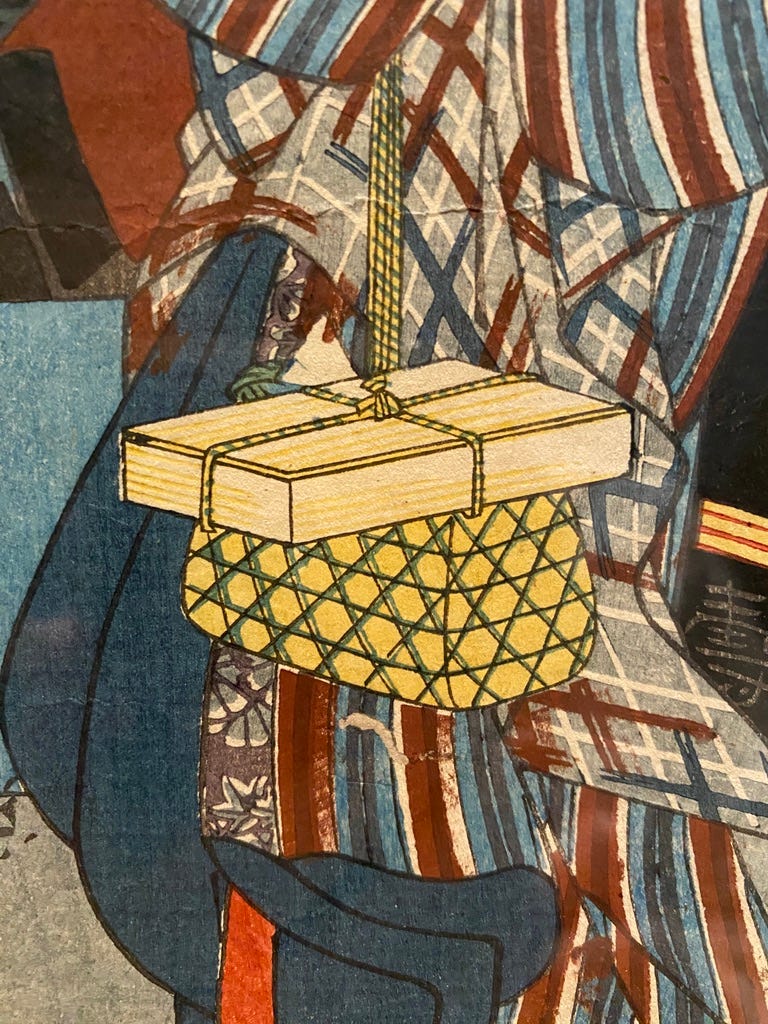
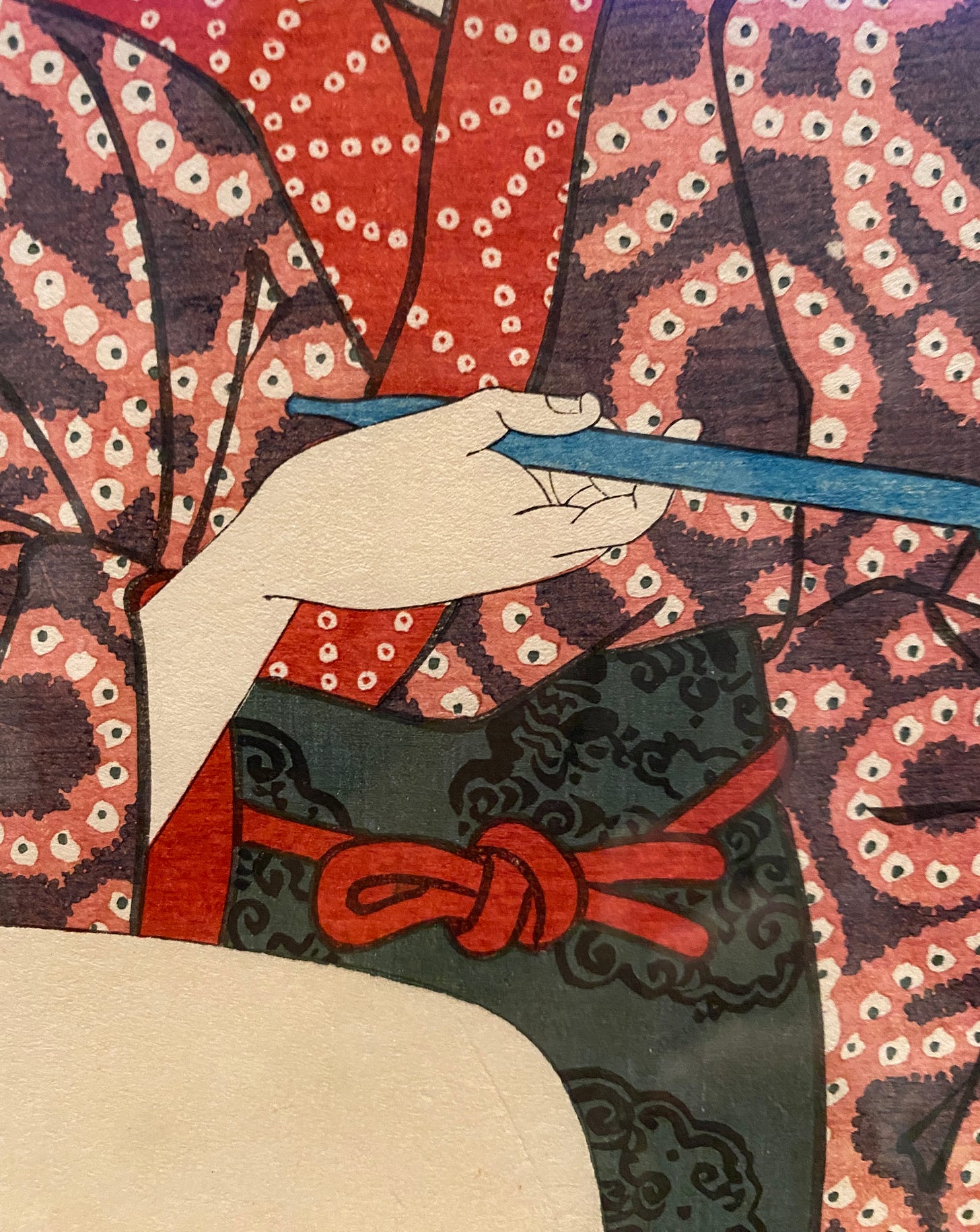
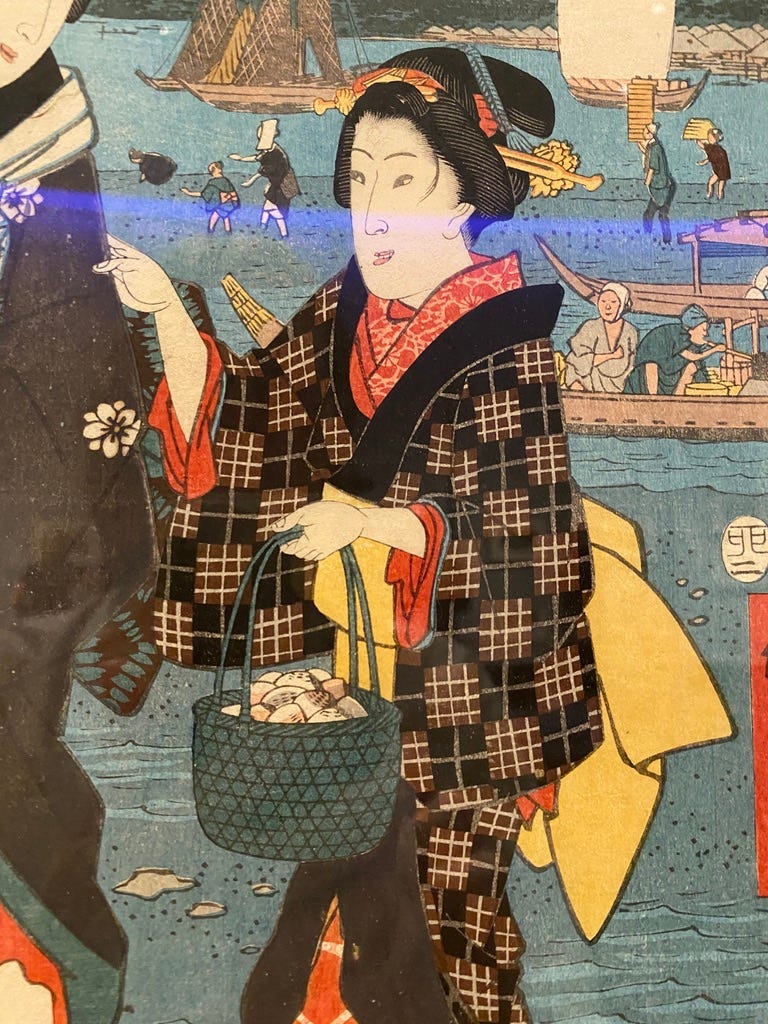
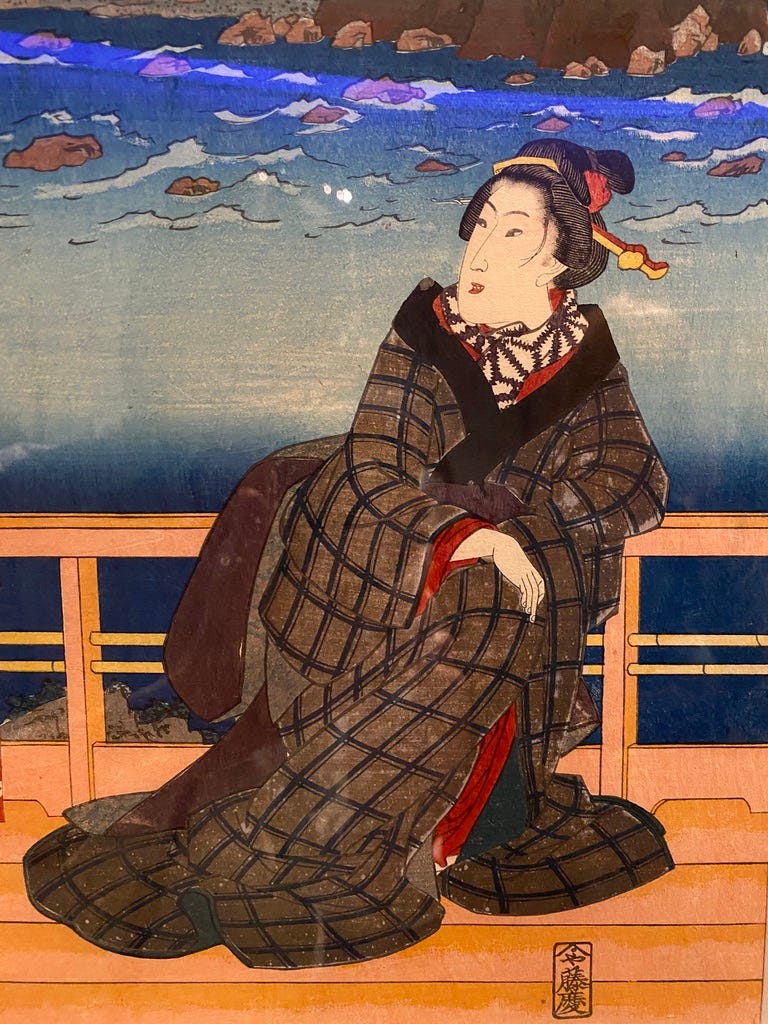
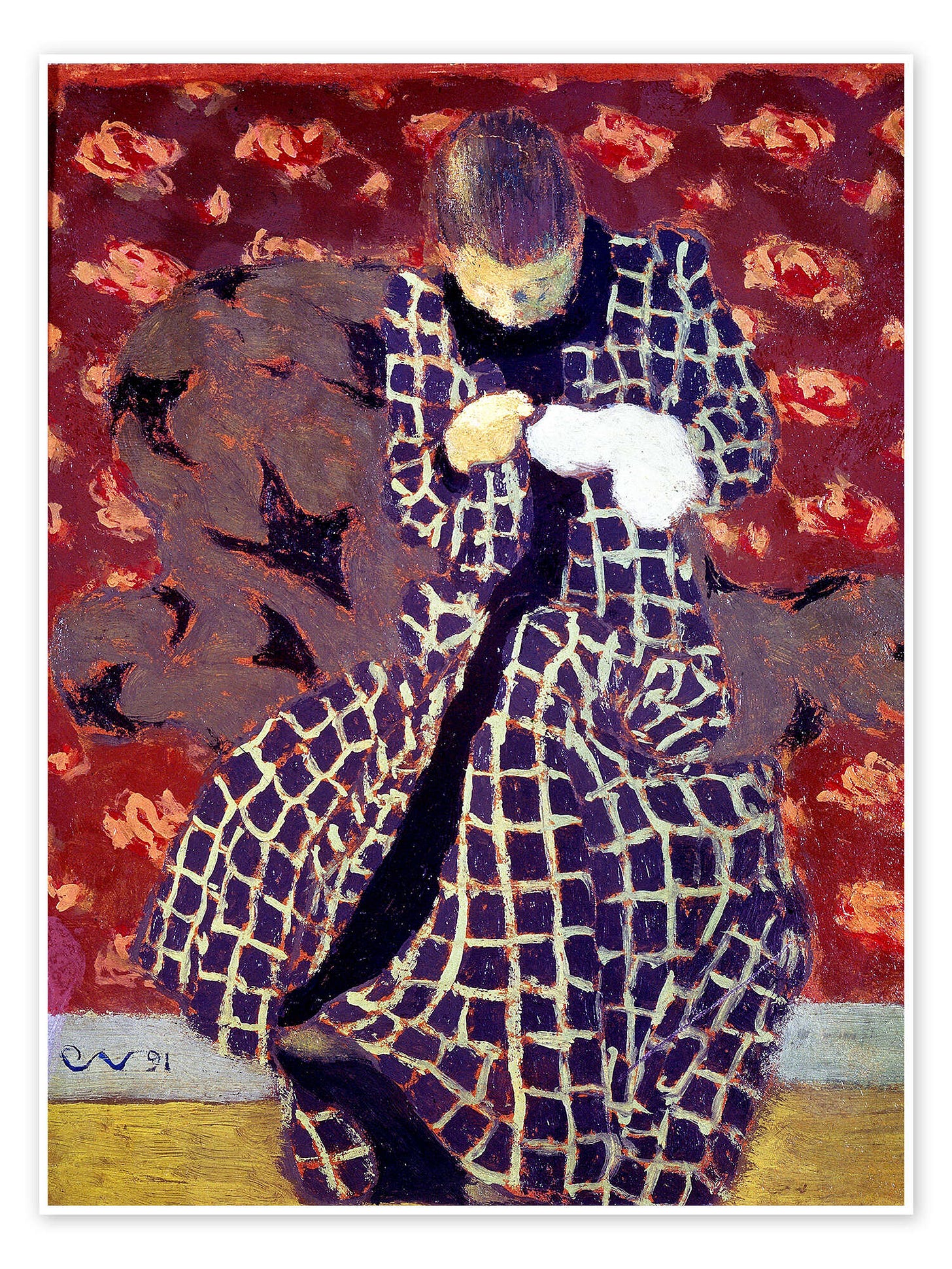
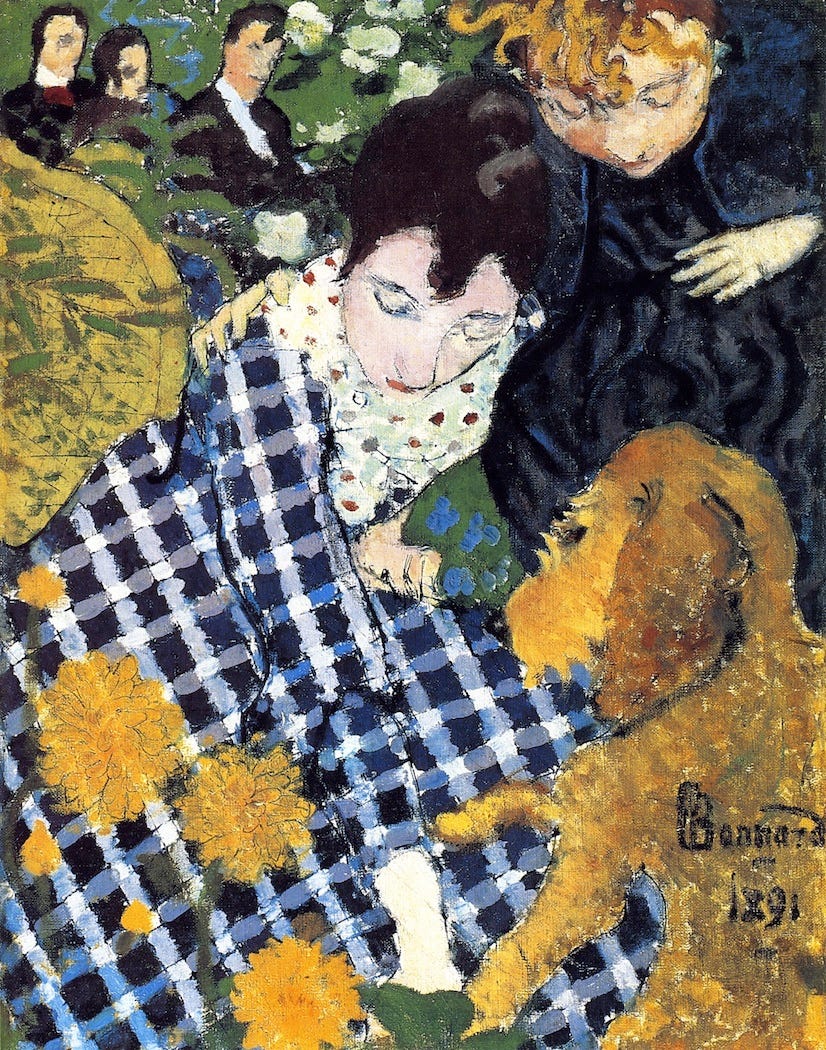
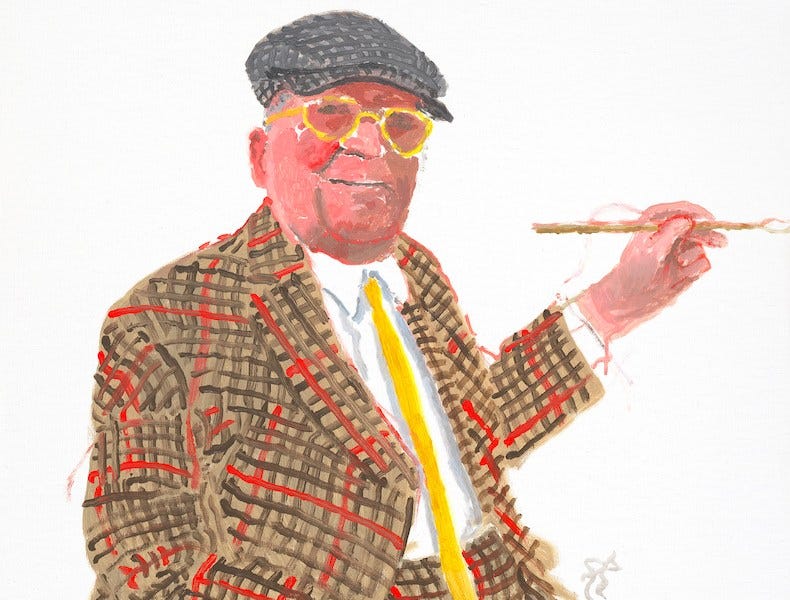


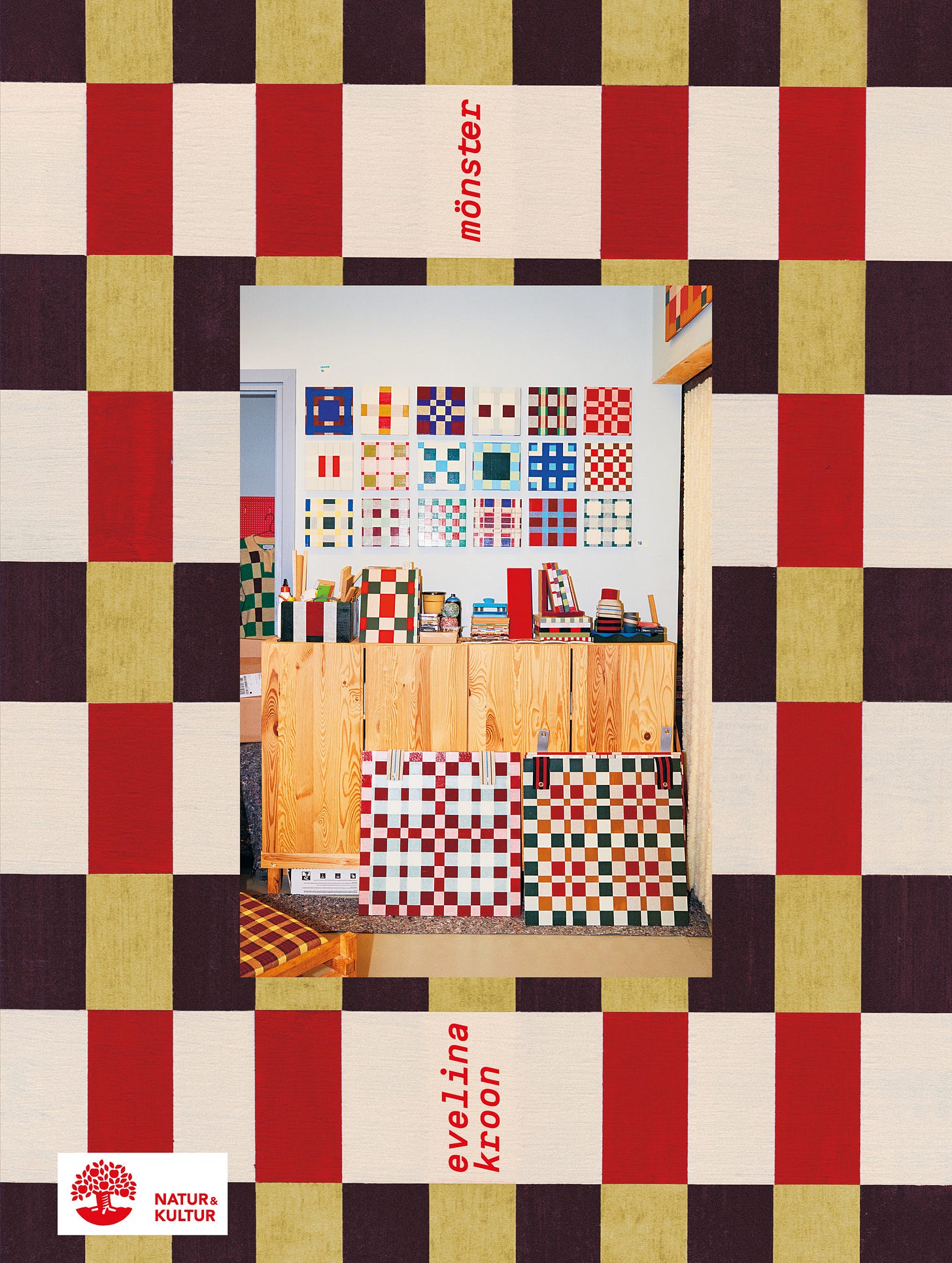

As ever Jane, many thanks for reporting such a find- an inspiring start to the day and a welcome respite from chaos. Patterns are a way of controlled order perhaps!
Japanese fabric shops are places of utter wonder. The patterns on those kimonos still look very recognisable today - there’s an entire fabric district in Tokyo where you could easily spend days, or indeed a week (or two), just gazing in awe. Then spending your entire holiday budget….